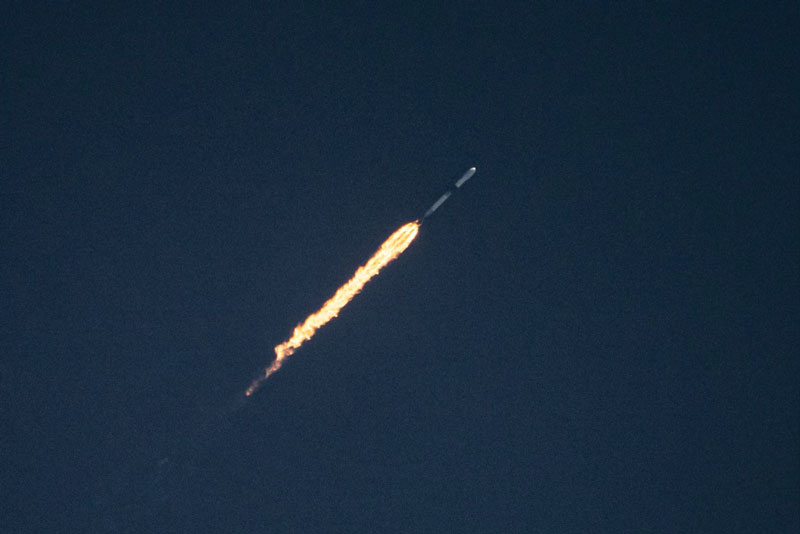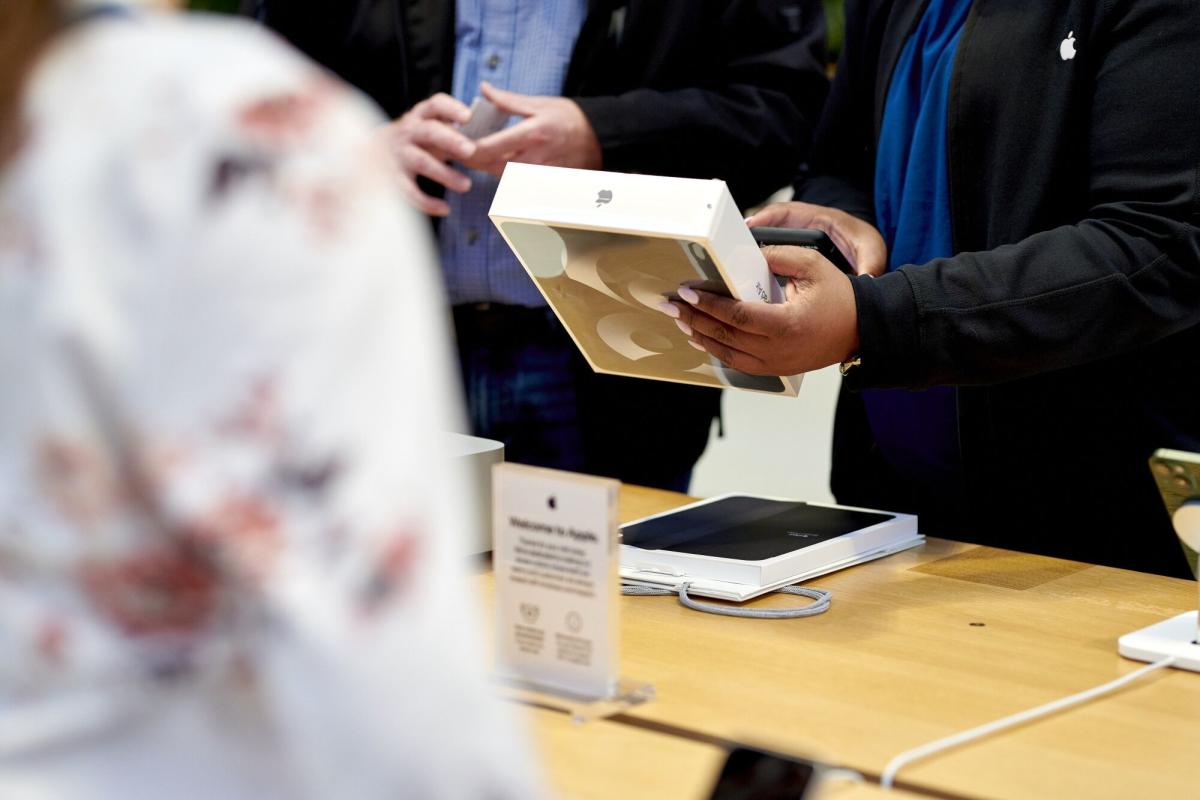SpaceX will mark some notable milestones with the planned launch of its Falcon 9 rocket from NASA’s Kennedy Space Center on Saturday. The weekend flight marks the first time that the European Commission’s Galileo satellites launch onboard an American-made rocket and from U.S. soil.
The Falcon 9 rocket is set to liftoff from Launch Complex 39A (LC-39A) at 8:34 p.m. EDT (0034 UTC). The first stage booster launching on this mission, tail number B1060 in the SpaceX fleet, will launch for a 20th and final time.
SpaceX does not plan to recover B1060 “due to the additional performance requirement to deliver the payload to medium Earth orbit.”
Spaceflight Now will have live coverage of this mission beginning about an hour prior to liftoff.
According to the 45th Weather Squadron, there is a 75 percent chance of favorable weather for liftoff. The primary concerns are the abundance of cumulus clouds, the prevalence of thick clouds and strong liftoff winds, which are tracking between 25-30 mph.
While B1060 is not being recovered on this flight, it will mark the most flight proven booster to launch a customer payload. The previous record was held by the same booster when it launched Intuitive Machines’ Nova-C lunar lander on its 18th flight in February.
Because it won’t be recovered, SpaceX removed the hypersonic grid fins normally affixed at the top of the booster as well as the four landing legs.
The two-part payload fairing protecting the two Galileo satellites will be scooped up out of the Atlantic Ocean by the recovery vessel, Bob, named for former NASA astronaut, Bob Behnken of the Demo-2 mission.
American solutions for European launch vacuum
The Galileo satellite constellation is part of Europe’s global navigation satellite system (GNSS). It’s similar to others operating around the world, the most prevalent of which is the United States’ Global Positioning System (GPS).
Galileo is been in operation since December 2016 and currently consists of 28 satellites, which orbit the Earth at 23,000 km. According to the European Union Agency for Space Programme’s (EUSPA) GNSS Service Centre (GSC), eight out of the 28 are listed as either “not usable” or “not available.”
The pair set to launch on Saturday will support the current constellation and offer supplementary services in the event another satellite stops working as intended.
Historically, all of the satellites have launched on either Russian Soyuz rockets or the Ariane 5, but neither are an option any more. The European Space Agency (ESA) stopped using Soyuz as a launch vehicle following Russia’s invasion of Ukraine in February 2022 and the final Ariane 5 rocket launched in July 2023.

During a press conference at the European Space Summit in Seville, Spain, in November 2023, Thierry Breton, the European Commission’s commissioner for the internal market, said that the continent’s lack of an orbital class rocket meant America, and SpaceX in particular, was their next logical option.
“We have four satellites to launch [in 2024] and given that Ariane 6 is still not going to be available, I accepted a proposal from ESA to use SpaceX,” Breton said. “We’re talking about very critical satellites. And so, we’re still negotiating with the American side and once that’s been finalized, yes, we will have two launches for four satellites, which will be carried out by SpaceX.”
Breton noted that the second launch via SpaceX is anticipated in July 2024.
According to a report in Politico, the European Commission cemented the €180 million (about $192.5 million), two-launch deal with SpaceX on March 19. That represents a roughly 36 percent markup on the cost of the two missions compared to the standard payment plan for a dedicated Falcon 9 launch, which is $67 million.
SpaceX notes in the “Capabilities and Services” section of its website that “Missions purchased in 2022, but flown beyond 2023 may be subject to additional adjustments due to inflation.”

This is not the first time that the lack of a European orbital launch vehicle has caused them to lean on SpaceX. In July 2023, a Falcon 9 rocket launched Euclid, the wide-angle space telescope designed to study the so-called “dark universe.” SpaceX was also selected to launch the EarthCARE (Clouds, Aerosols and Radiation Explorer) spacecraft to a Sun-synchronous 400 km polar orbit in May and the Hera spacecraft to the asteroid, Didymos, in October.
A letter from Pietro Francesco de Lotto, the president of the Consultative Commission on Industrial Change, to the European Parliament opined on the growing gulf in space access for Europe compared to other global space powers. He argued that “the European space sector is facing an increasing number of threats.
“The funding gap with the US and China is widening. European space budgets are six times lower than those in the US, and the budgets available within the EU are mostly uncoordinated, while American space doctrine has made space a key instrument for its supremacy and independence in this domain,” he wrote. “China’s exponential rise cannot be ignored. Other actors such as Russia and India are also stepping up their game.
“Finally, the European space industry is now competing with giant players outside Europe, which have optimised their internal supply chains and are massively disrupting the markets (SpaceX in particular).”

The impact of SpaceX is something that has been discussed by Europe for years. A 2007 report from the Commission of the European Communities talked in part about the prospective global space industry and noted that “The entry of low-cost launchers such as the Space Exploration Technology (SpaceX) Falcon may represent a major competitive threat for established launcher manufacturers, with pricing aimed at 70 percent less than them.”
The launch campaign of the first launch of the Ariane 6 rocket is now finally underway with a launch date targeting summer 2024 somewhere between June 15 and July 31.
“Getting Ariane 6 to launch and to re-establish Europe’s access to space is of highest priority for ESA to resume regular rocket launches from Europe’s Spaceport,” said ESA’s Director General, Josef Aschbacher in a statement. “Having the rocket stages together on the launch pad marks the start of a launch campaign and shows we are almost there: soon we will see this beauty soar to the skies.”
✅Upper stage firing test
✅Transfer and verticalisation of central core
✅Transfer of the boosters to the launch padNext up:
🔜Ariane 6 qualification review results expected in the beginning of May
🔜Payload arrival in Kourou, French Guiana@ESA, @CNES and @ArianeGroup are… https://t.co/mCpJ8kWfyj— Josef Aschbacher (@AschbacherJosef) April 26, 2024
Secrecy for launch
Unlike the recent launches of Galileo satellites, there is notably much more secrecy surrounding this mission. The SpaceX mission page doesn’t note that there are two satellites on board, rather just noting that this flight is called the “European Commission’s Galileo L12” mission.
The published launch timeline is also remarkably truncated. Public information shared prior to liftoff ends with the deployment of the Falcon 9’s payload fairings at T+3 min 39 sec into the mission.
That stands in stark contrast with the most recent Galileo mission using a Soyuz rocket on December 4, 2021, which featured a launch broadcast from Arianespace that lasted more than four hours. The broadcast notably stayed through payload deployment at an altitude of 23,544 km (about 15,000 miles).
Despite the importance of the Galileo satellite constellation to ESA and the EC, neither agency has mentioned the pending launch in the past week leading up to liftoff.

Dr. Sarah Adams is a scientist and science communicator who makes complex topics accessible to all. Her articles explore breakthroughs in various scientific disciplines, from space exploration to cutting-edge research.








